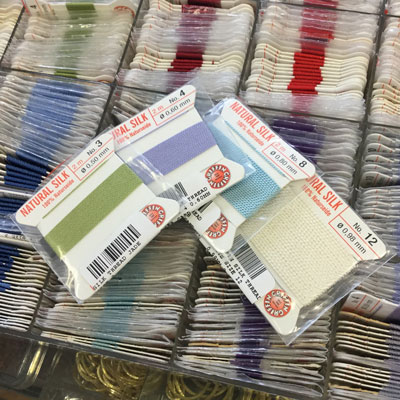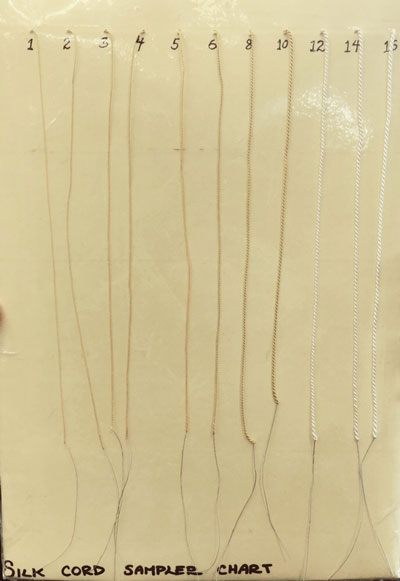Recent Posts
- Home
- Musings From the Store
- Knot Too Hard
Knot Too Hard
Posted by on


Knot Too Hard (How to choose the right size knotting cord for your project)
Knotting between beads is a traditional method of bead stringing that serves several purposes:
It protects fragile materials from rubbing against each other, it ensures that you will not lose more than one or two beads should your piece of jewellery break, and it can add length, allowing a pricy strand of beads to go farther.Knotted beads also offer a lovely drape and sense of movement to your creation. The trickiest part of any knotting project is determining the right size cord for the task.
It is advisable to use the thickest thread that your chosen bead can accommodate, remembering that there is some added bulk where the needle is attached.Some stones are only drilled from one side with a tapered drill bit. This results in a bead where one side of the hole is much smaller than the other. Even the largest thread that will allow the needle to pass through the small side, will make a knot that will slip inside the larger-holed side of the bead. You have two options to deal with this challenge. One is to make a double or triple knot, and the other is to use two threads at once, allowing the needles to pass through each bead consecutively. (The smaller the cord size, the smaller the attached needle.) I prefer to string all my beads before knotting to make this process less tedious, and also to make sure all the beads fit on the cord (or cords). There is nothing worse than getting to the end of a necklace, and discovering that your last few beads can't fit over the needle!
If you are local to our store, please ask to view our silk cord sampler, where we have conveniently attached one of every size silk cord that we carry (1,2,3,4,5,6,8,10,12,14,&16) so that you may compare them side by side.
Happy Knotting!

 Loading... Please wait...
Loading... Please wait...
